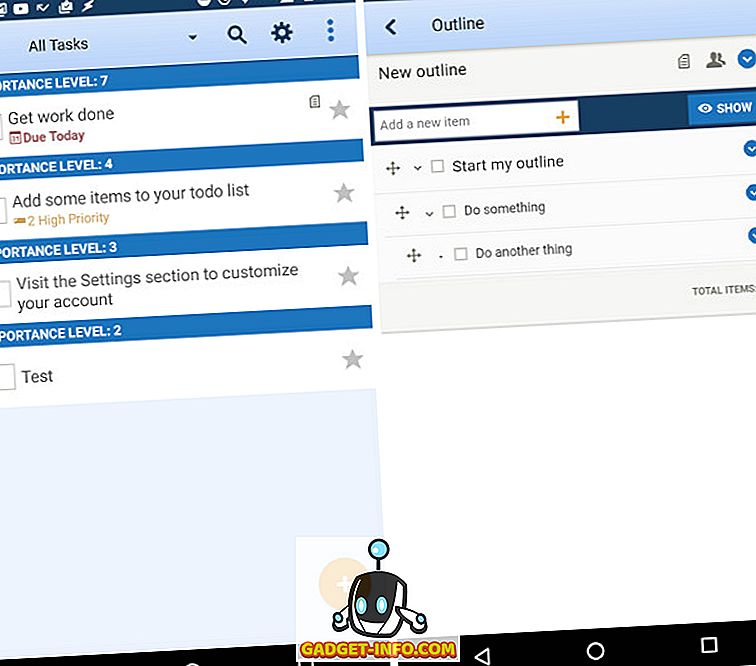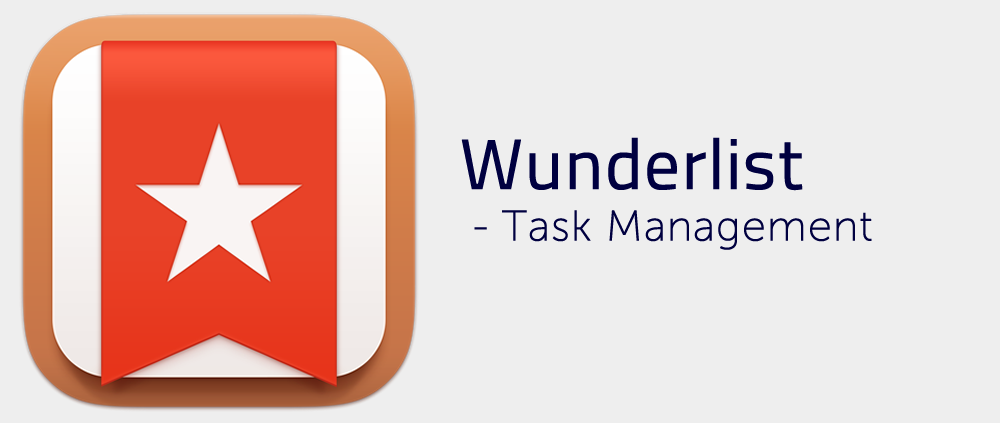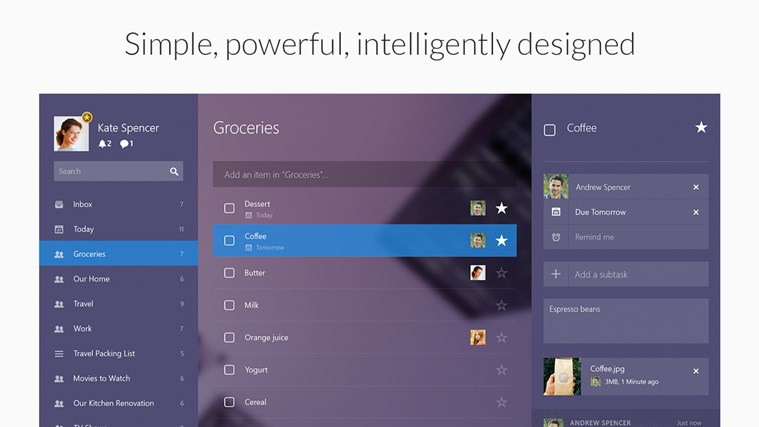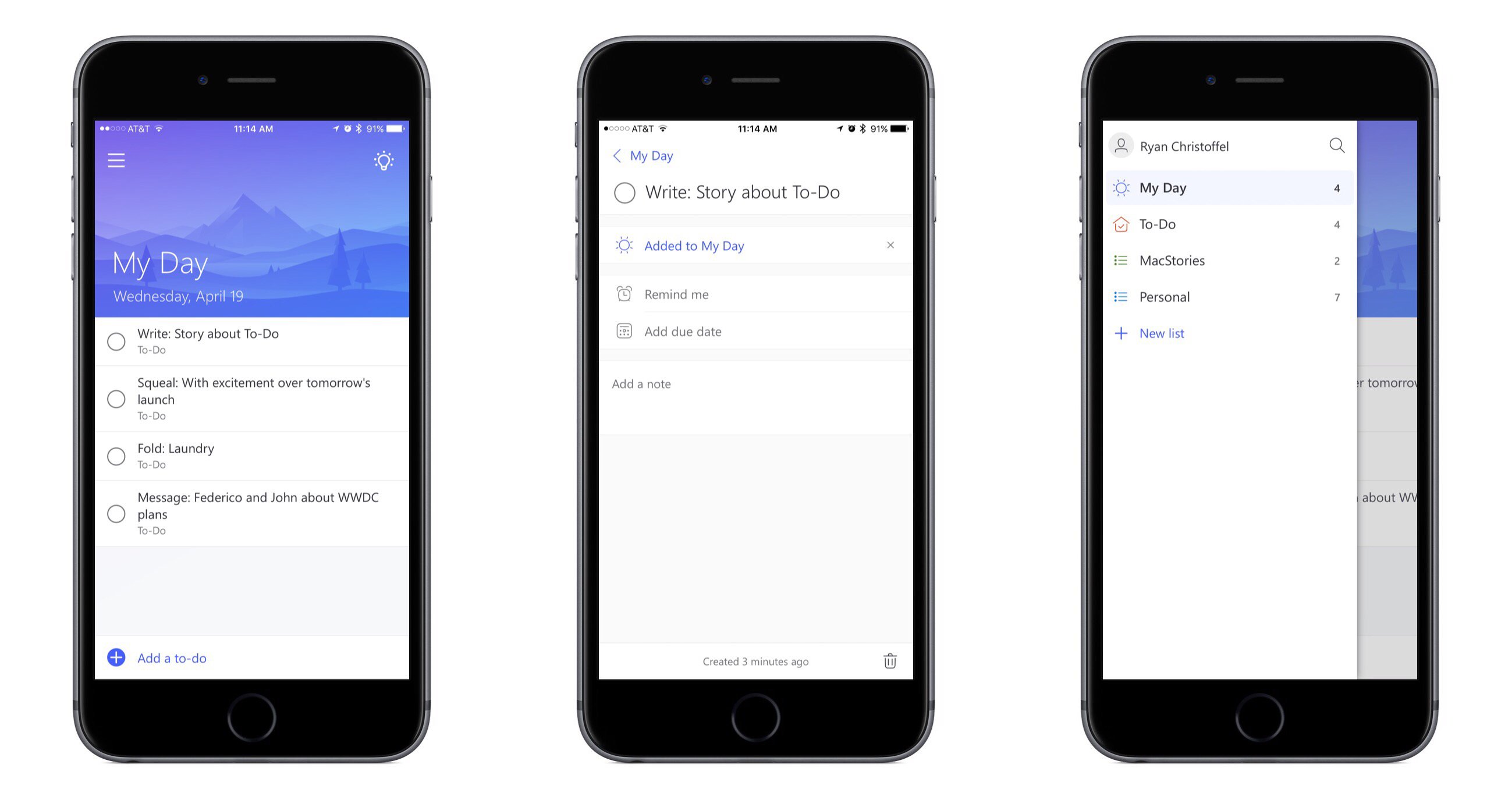Wunderlist App
The departure of Wunderlist is causing quite a stir, with many users wondering what the Wunderlist app replacement will be and when Wunderlist will be shut down.
Wunderlist, the beloved to do list app, shuts down on May 6, 2020. Microsoft bought Wunderlist in 2015. They would very much like you to migrate your tasks to Microsoft To Do, a spiritual successor to Wunderlist that integrates with Outlook and other Microsoft tools. Dec 10, 2019 Wunderlist – one of the most popular to-do list and reminder apps across platforms, reached that spot by bringing almost everything a person might need from such an application, and making it extremely easy to use. Download this app from Microsoft Store for Windows 10, Windows 10 Mobile, Windows 10 Team (Surface Hub). See screenshots, read the latest customer reviews, and compare ratings for Microsoft To Do: Lists, Tasks & Reminders.
That’s because Wunderlist has been one of the most popular task management apps out there for the last several years, and it’s shortly going to be shut down entirely.
The app is already closed to new users. Existing users will be unable to use the app from May 6th, except to export their lists to its official successor, Microsoft To Do.
Wunderlist is being shut down because a gradual withdrawal of technical investment in the app.
This has affected the Wunderlist app in a number of ways, including:
- outdated features
- absence of major updates
- maintenance difficulties.
In short, Wunderlist has become so hard to maintain that Microsoft has decided to abandon the app and migrate users to another Microsoft-owned task management application.
It may seem logical to move from Wunderlist to Microsoft To Do, which offers everything Wunderlist does, along with a number of customization features not currently offered by Wunderlist.
However, before climbing onboard the Microsoft To Do train, it’s worth taking a look at some of the complaints that have been leveled at the Wunderlist app.
Poor web-app functionality with a number of bugs not found in the app version.
Limited sub-task functionality, which does not allow you to capture rich information or files for sub-tasks as you would for a task.

Limitedtask sharing features. While you can invite other members to your task lists and share tasks, Wunderlist lacks comprehensive email task sharing functionality, as users are unable to complete tasks by mail.
Wunderlist does not scale up well to business use, a major flaw with the massive move towards remote offices and telecommuting.
In short, Wunderlist has been left behind by time and technology. This means it is worth looking for apps that can not only do what Wunderlist does well, but also offer additional value to users.
With Wunderlist set to shut down, a number of apps are competing to fill the gap.
These include:
- task management apps
- workflow management apps and
- project management apps.
If you’re looking for a Wunderlist replacement you can safely overlook the last two categories of app.
The likes of Asana and Monday, completely overshoot the requirements of the average Wunderlist user.
These are enterprise level freemium business applications that are designed to manage large teams across projects, and to craft more complex workflows than required by the typical Wunderlist user.
Meanwhile, many of the task management apps on the market focus too hard on emulating the outdated functionality on Wunderlist, which means are vulnerable to the same usability issues.
Therefore you need to have a clear shopping list in mind when you go in search of your Wunderlist replacement app.
Ask yourself:
- What do you want the app to be able to do?
- What will you be using it for? Private or business use, or a mix of both?
- Do you prefer a cross-device compatible web app or a downloadable application?
- Will you primarily be using the app to schedule your own tasks or to manage tasks across a group of people?

Once you have these answers you’ll have a better idea of which app to choose as a replacement.
Before looking at alternatives to Wunderlist, let’s take a look at the difference between Wunderlist and its official replacement, Microsoft To Do.
According to the Wunderlist website, Microsoft To Do offers all the existing task management functionality you associate with Wunderlist, as well as the following extra features:
- personalized daily planner
- suggestions, and a review of what’s most important to you, every day
- colour coded lists
- list themes
- dark mode.
As you can see, upgrades have largely focused on cosmetic alterations to the app. A layer of AI has been added with the introduction of suggestions, and the app has been edged towards individual rather than mixed or business use cases.
If you were satisfied with everything Wunderlist was doing for you, this shouldn’t be a problem, but if you’re looking for a step up, you may need to look elsewhere.
So what should you use instead of Wunderlist?
If you’ve answered the questions we posed earlier, you should have an idea of what you are looking for. Then it’s a matter of sorting through available options to figure out what works best for you.
We admit we have a bias. We think you should use SOPHY to replace Wunderlist.
That’s because SOPHY was not designed as a Wunderlist emulator or clone, like Microsoft To Do and many other copycat apps have been.
Wunderlist App Help
SOPHY has been designed for mixed personal and business use, using a clean, uncluttered interface to enable effortless task creation and sharing.
SOPHY also offers:
- a cloud-based web app that allows for instant accessibility across a wide variety of devices and operating systems
- a focus on task sharing, including no limits on team sizes and super-easy team creation and management
- the ability for team members to complete tasks from their email accounts, making the app ideal for introduction to change-resistant teams at short notice
- rich data capturing at all task level, including on-task comments and media and file uploads.
As you may have already heard, Wunderlist is due to shutdown on the 6th of May, 2020.
What’s significant about this shutdown—compared to other app shutdowns—is that Wunderlist’s discontinuation isn’t because of a decline in sales or poor user count. It had 13 million users and more than 1 billion to-dos at the time of the acquisition.
The popular list and task management app was acquired by Microsoft in 2015 and while many were hoping that the tech giant would somehow incorporate Wunderlist into their Office repertoire, it seems that, after years of a “will they? Won’t they” scenario, they’ve decided to shut it down.
I get it, if I were a tech heavyweight with lots of cash and wanted to eliminate the competition, I’d have done just the same. And if I were a startup who created a product so successful that someone was willing to give me literal millions for it, I’d also have done what the Wunderlist founders did. After all, for some, the point of creating a startup is to eventually have the product or service sold for squillions, is it not?
While the acquisition was a happy day for the Wunderlist team, it was a sad day for many to-do list enthusiasts, as those who were familiar with Microsoft’s habit of buying small successful products and then discontinuing them feared that Wunderlist would suffer the same fate. And they were right.
So, to honor one of the most successful apps to come out of Germany, let’s take a look at how it all began and how it came to be.
Wunderlist App Itunes
“We launched it and literally had overnight success with it,” said 6Wunderkinder CEO Christian Reber on Wunderlist’s initial release. “We grew faster than we ever dreamed of and from then on, it became a serious product.” (source: Tech.eu)
Wunderlist was created in 2011 by Berlin-based startup 6Wunderkinder, fronted by founder and CEO, Christian Reber. The idea for the task management app came from the desire to “reinvent project management”.
You see, Wunderlist wasn’t what the six “wonder kids” (rough translation of the company name) first sought to create. What they wanted to develop was an all-in-one productivity app which merged workplaces, notes, profiles, and other collaborative tools to help with efficient teamwork. That app was Wunderkit.

During Wunderkit’s development, Reber realized that it was going to be a while until a fully-fledged app would be available. So, in the meantime, they released Wunderlist, the to-do list part of the all-in-one app, to keep customers interested.
And interested they were. Wunderlist turned into an overnight success. It took the app only nine months and two days to reach one million users! (For comparison, that’s a faster initial growth rate than huge companies like Twitter and Foursquare.)
The success can be attributed to the app’s simplicity and cloud-based flexibility. It is essentially a to-do list app that allows you to keep a record of your tasks, but its cross-platform and sharing features make it an excellent tool for collaboration.
Once Wunderkit was released in 2012, the young startup found it difficult to balance the two products. Later that year, Reber made the difficult decision to cease development of Wunderkit so they could focus solely on Wunderlist.
“We were lost in perpetual discussions about how features should work and what they should look like. Unfortunately we were never fully satisfied with the result. That was when we understood we had to make a decision, it’s either the one or the other. Either we focus on Wunderkit or Wunderlist — both would be too much of a challenge. In the end the decision was pretty obvious, but it was still hard to make.” – Christian Reber

The decision wasn’t made in vain, as Wunderlist went on to enjoy many accolades including App of the Year in 2013 for their Mac app and Google Play’s Best Apps of 2014. Then, in 2015, it was acquired by Microsoft for a rumored $100 million to $200 million.
If you’re a Wunderlist user, you’d know that the journey to Microsoft To Do hasn’t exactly been smooth sailing. Microsoft planned to take the best features of Wunderlist and implement it into their very own list app called Microsoft To Do. But due to technical complications experienced during the transition, Wunderlist remained available online while Microsoft was getting itself together.
A lot of the issues was due to technical porting challenges. AsReber explained, “Wunderlist’s API runs on Amazon Web Services, and should then be ported to Azure. But that was extremely time-consuming, so everything had to be rewritten.”
There was a lot of uncertainty surrounding the future of Wunderlist. While it was known that Microsoft would eventually retire it, an official date or announcement hadn’t been made, and the bumpy transition into Microsoft To Do left users very disheartened. It even reached a point where Reber offered to buy the app back to keep it running.
Considering Microsoft’s reputation for buying successful apps and then discontinuing them, fans and commentators said that Reber should have foreseen the fate of Wunderlist once he accepted their offer.
Since the official Wunderlist shutdown date was announced in December, new users are unable to register for an account. Existing users, however, will be able to work on the web, desktop, and mobile platforms until the 6th of May, 2020. What access users have after then is still unclear, but the apps will no longer sync across platforms. This signals Microsoft’s seriousness in discontinuing the beloved task management app.
At the time of their launch, Wunderlist was a hit with many users. In comparison to what was on offer on the market, it had an intuitive interface and a collection of impressive features. The list sharing feature, especially, was a favorite. It turned the app into more than just a to-do list, but a tool for collaboration. Since then, many apps have followed suit and the collaborative productivity software market is still on the rise.
The success of Wunderlist didn’t just affect the productivity software market, but it also placed Berlin on the map as a credible place for starting a successful international business. 6Wunderkinder was the first Berlin startup to raise funding from Sequoia in California. Now, if you go to Berlin, you’ll find that there’s no room to swing a cat without knocking over someone who works for a startup.
Wunderlist’s story is inspiring, especially for German startups trying to make their mark (hi 🙋). Perhaps the best thing about it is that Reber and the wonder kids didn’t try to recreate the wheel, but instead, gave customers what they wanted. They took an everyday tool and made it better. And in thinking about what customers wanted, they took their dream of “reinventing project management” and turned it into a multi-million dollar product that will be missed by many.
Cheers,

Dinnie and the Zenkit team
Was this article helpful? Please rate it!